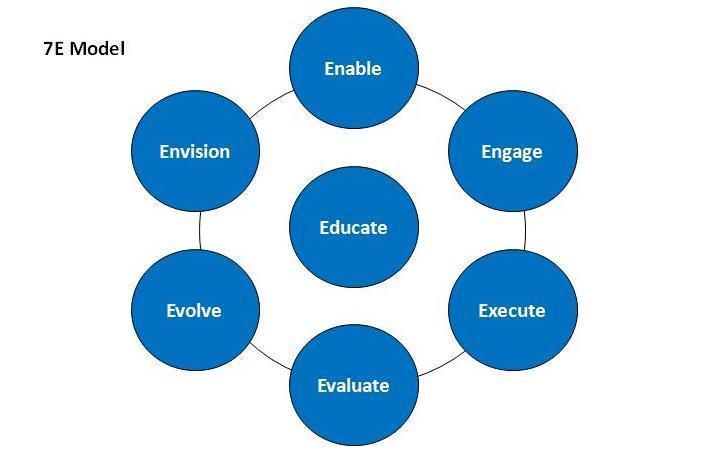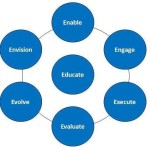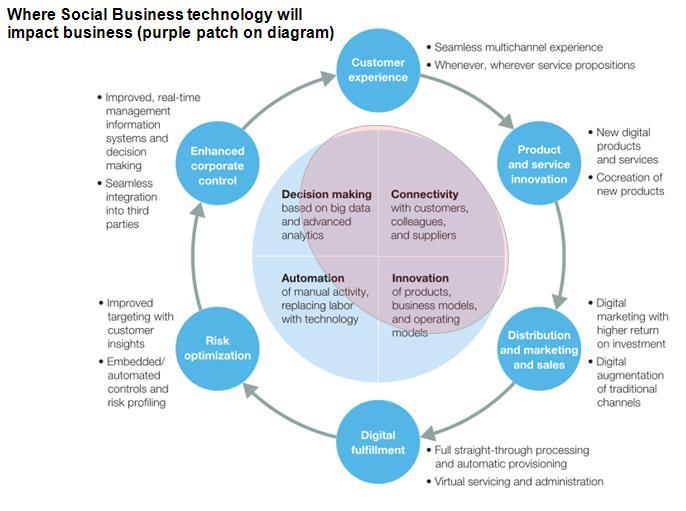This year’s London Enterprise Digital Summit 2017 Summit Workshop is on Driving Digital Transformation in the Enterprise
We plan to cover 4 main topics, with our latest experience from helping large enterprise clients in the UK and Germany expand their transformation programs over the last year, plus all our previous research and work, of course. These topics are:
1. Understanding the impact of a Collaborative Working Environment (a.k.a. the impact of Enterprise Social Networks, Social Intranets and the Digital Workplace), looking at:
- Models & Frameworks for Understanding Collaborative Technologies – we look at these technologies, how they work, where they are valuable – and where not so useful. We will wrap it into our 4C model – Collaboration, Cooperation, Coordination and Communication.
- Interdependencies of Technology, Corporate Behavior & Organisational Design – in this section we bring our own experience and UK research, plus our reviews of the many case studies from others who have spoken at our Digital Summits in Germany, France and the UK over the last few. In short, the technology is merely the start, it’s all about the people, and especially how the organisation is structured and needs to be adapted to use these technologies properly.
- Strategic Consequences & Implications – These technologies have real impact across the organisation, and will drive shifts in how the organisation operates. This will create opportunities for some, and threats to others. Social Technology amplifies an organisation;s strengths but can also amplify it’s weaknesses. Any major Transformation needs to take these issues into account
2. Strategic Approaches to managing Transformational Change
- Measurement Parameters & Key Indicators for the evaluation of the “Change in Progress” – i.e. how to measure and monitor what is happening. “What gets measured, gets done” they say – but also “You only get what you measure”. We look at metrics people are using with the tried and tested Agile Elephant approach – “What Works, What Doesn’t…and What’s Next”
3, Recommendations for Being Your Own Consultant
Our ever popular section on how to do all this without buying our services (what could go wrong with that….) especially looking at:
- Begin, Improve or Expand your ESN/Social Intranet/Digital Workplace – We have learned a lot over the last year about what steps are required to Improve/Expand an initial implementation, and will add this to our review of how to approach the process of implementing these systems. Main areas examined are:
- Diagnosing the Organisational Requirements & Maturity Level – thsi is a key part of starting an implementation or improvement/expansion process.
- Finding the High Impact Opportunities – our experience is that unless these systems solve business requirements, all the energy and excitement when starting off slowly deflates as there is diminishing takeup. We look at how to work out where these system can give great “bang for the bucks” and get people behind them.
- Engagement – Making it Human – without people engaging, these systems whither on the vine. We look at “what works, what doesn’t” in getting people to use these systems with enthusiasm.
4. Building a business case and Defining the ROI
- In other words, getting the money and movement to make it happen. We look at how to build a “rough cut” ROI that works for an initial business case in order to secure resources in an enterprise environment.
There Will Be Cake….and Booze
As per usual, the event features the best teas and cakes in London, supplied by the British Academy. it’s worth attending for these alone, plus of course the opportunity to hear the stories of the other people’s experience in a “Chatham House” rules environment for the day, to give you support and inspiration.
And after the event join us for a drink at the ICA (Instutute of Contemporary Arts) downstairs….
Go here for more information about the conference, and to book your ticket.
Or contact us









